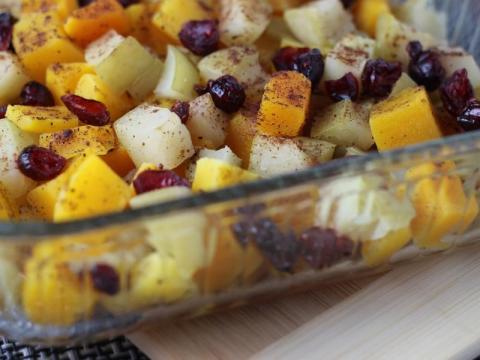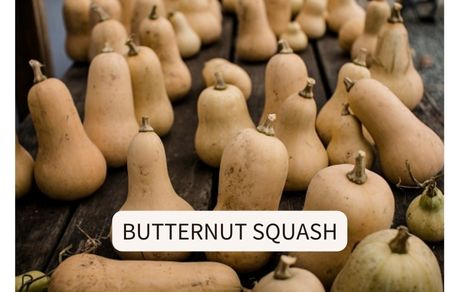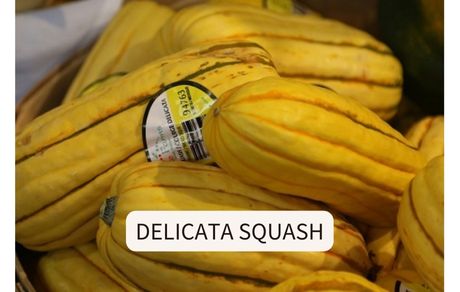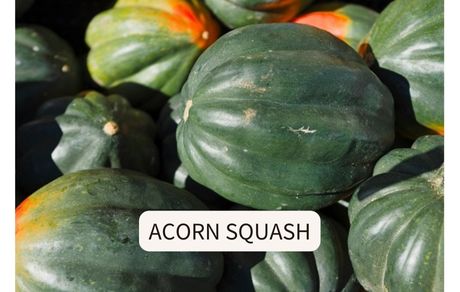
One of our favorite foods this fall is winter squash! Winter squash is a vegetable that is easy to find (and easy to cook) and it is usually on sale in the fall. Common types you might see are butternut, acorn, spaghetti, delicata, and even pumpkin. They can be cooked many ways, from a roasted squash medley, to hearty and comforting soups, and even mashed like potatoes or diced in a salad. Here are some tips and tricks for adding this delicious vegetable to your next meal.
Winter Squash Nutrition and Flavor. Winter squash is a good source of fiber, potassium, and vitamins A and C. The flavors are sweet, similar to sweet potatoes or carrots.
Choosing Winter Squash. Look for squash that do not have bruises, brown spots, or cuts. The skin of the squash should be smooth and dull, not shiny. The squash should seem heavy for its size. Store them in a dark, dry place for up to several months until you’re ready to use them.
Preparing Winter Squash. Preparing winter squash is easier than you might think. It is a lot like cutting a melon. First, wash it under cool running water to remove any dirt. The tough skin of squash can be hard to cut into, so it’s important to have a large, sturdy knife. One way to make it easier to cut is to poke holes in the skin with a fork and microwave it for 2 minutes before you cut it.
 Butternut: Lay the squash lengthwise on a cutting board. Cut off the top just below the stem and cut the base off of the opposite side. Then cut it into two pieces, slicing between the round bulb-shaped bottom and the thinner neck. If you have a vegetable peeler, use it to peel the skin off each piece. If you don’t have a vegetable peeler, place the flat cut side of each piece on the cutting board and go around the edges cutting off the peel from top to bottom. After it’s peeled, with the cut side on the cutting board, cut each piece in half down the middle. Scoop out the seeds with a spoon. Dice or slice it according to your recipe, like in this recipe for Squash, Apple, and Cranberry Casserole, pictured above.
Butternut: Lay the squash lengthwise on a cutting board. Cut off the top just below the stem and cut the base off of the opposite side. Then cut it into two pieces, slicing between the round bulb-shaped bottom and the thinner neck. If you have a vegetable peeler, use it to peel the skin off each piece. If you don’t have a vegetable peeler, place the flat cut side of each piece on the cutting board and go around the edges cutting off the peel from top to bottom. After it’s peeled, with the cut side on the cutting board, cut each piece in half down the middle. Scoop out the seeds with a spoon. Dice or slice it according to your recipe, like in this recipe for Squash, Apple, and Cranberry Casserole, pictured above.

Spaghetti: Lay the squash on its side on a cutting board. Cut off the top just below the stem and cut a half inch of the base off the opposite side. Stand it up so one of the cut ends is on the cutting board. Cut it in half down the middle. Scoop out the seeds with a spoon. Now it’s ready to cook! Give this simple and tasty Herbed Spaghetti Squash recipe a try.
 Delicata: Lay the squash on its side on a cutting board. Cut off the top just below the stem and cut ¼ inch of the base off the opposite side. Stand it up so one of the cut ends is on the cutting board. Cut it in half down the middle. Scoop out the seeds with a spoon. Place each half (cut side down) on the cutting board and slice into ½ inch pieces. The skin of delicata squash can be eaten, so there is no need to peel it.
Delicata: Lay the squash on its side on a cutting board. Cut off the top just below the stem and cut ¼ inch of the base off the opposite side. Stand it up so one of the cut ends is on the cutting board. Cut it in half down the middle. Scoop out the seeds with a spoon. Place each half (cut side down) on the cutting board and slice into ½ inch pieces. The skin of delicata squash can be eaten, so there is no need to peel it.
 Acorn: Lay the squash on its side on a cutting board. Cut it down the middle from stem to tip. Use a spoon to scoop out the seeds. If you’re using it in a recipe that calls for diced or sliced squash, you can peel it, although the skin is edible. If your recipe calls for halves or quarters (like in this Baked Acorn Squash and Stuffed Acorn Squash recipes), leave it unpeeled.
Acorn: Lay the squash on its side on a cutting board. Cut it down the middle from stem to tip. Use a spoon to scoop out the seeds. If you’re using it in a recipe that calls for diced or sliced squash, you can peel it, although the skin is edible. If your recipe calls for halves or quarters (like in this Baked Acorn Squash and Stuffed Acorn Squash recipes), leave it unpeeled.
You can watch a video about preparing winter squash and find other squash recipes on Illinois Extension’s Home Vegetable Gardening page.
Storing Prepped Squash: If you’re not going to eat the prepped squash right away, you can store it in the freezer or refrigerator. Uncooked squash can be refrigerated in a sealed container for up to 3 days. To freeze diced, uncooked squash, spread it out on a baking sheet in an even layer so the pieces are not touching. Then pop it in the freezer for 3-4 hours. Put the frozen diced squash pieces into a freezer bag or storage container and store them in the freezer for up to 3 months. After cooking, the squash can be refrigerated in a sealed container for up to 3 days.
Squash Seeds. Don’t forget to save the seeds scooped out of your winter squash! The seeds from winter squash are a good source of fiber and healthy fats. They can be prepared the same way as pumpkin seeds. Eat them as a delicious snack, or to add crunch to salads or trail mix.
Now that you know how to use winter squash in the kitchen, it’s time to start cooking! Pick up some of these tasty and nutritious squashes to enjoy this fall and winter.

